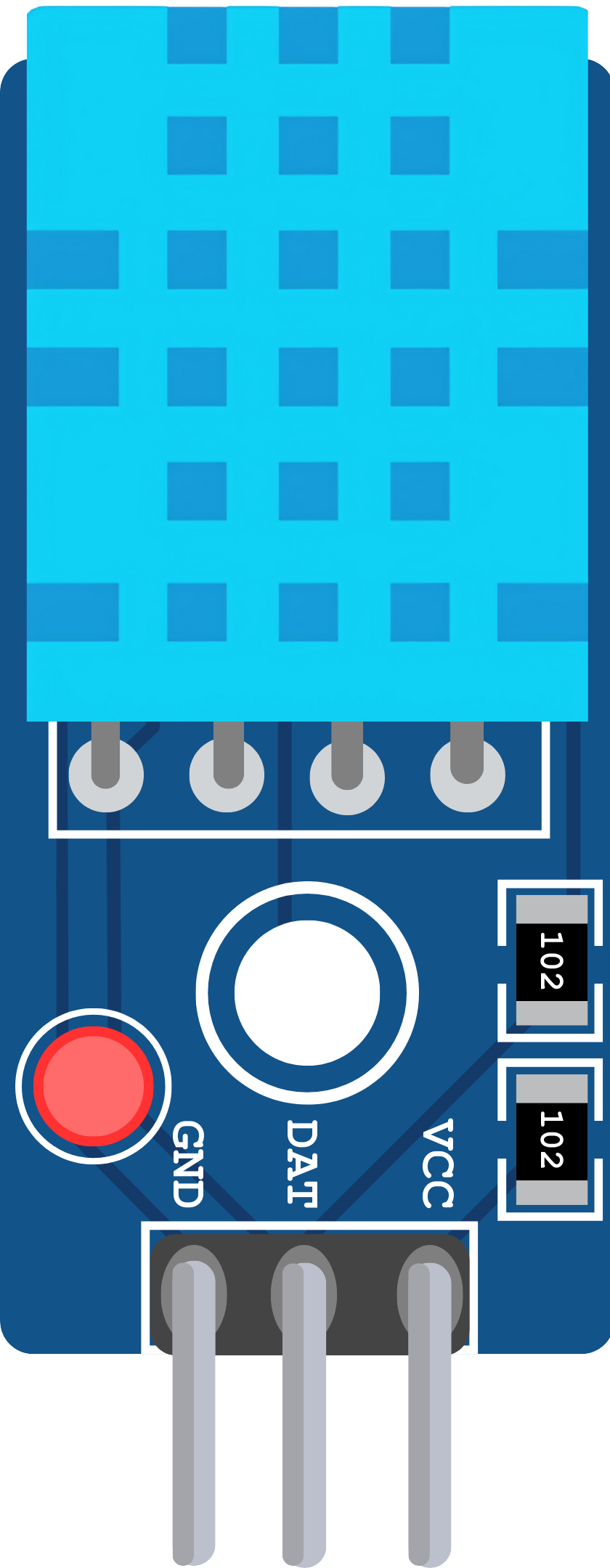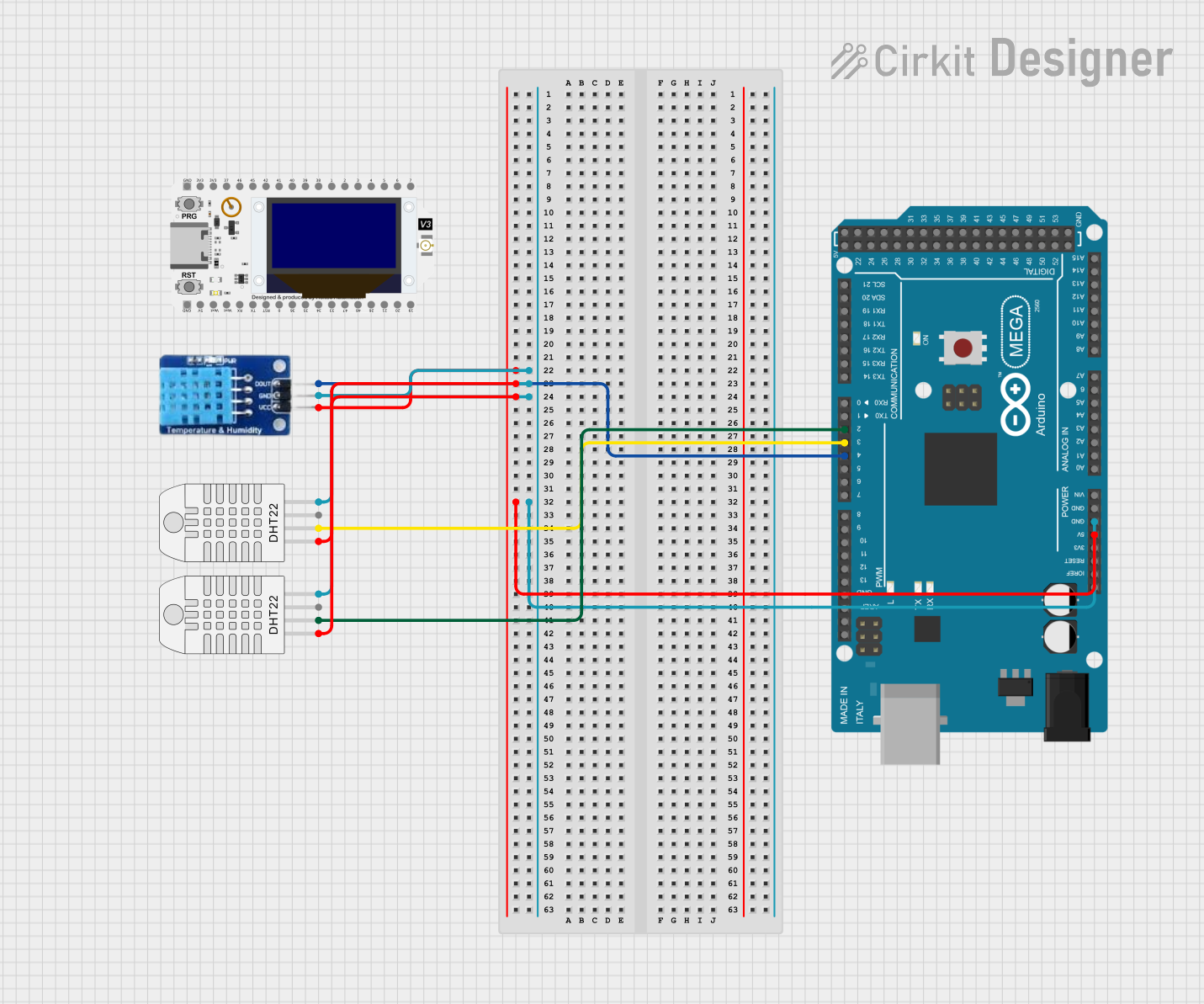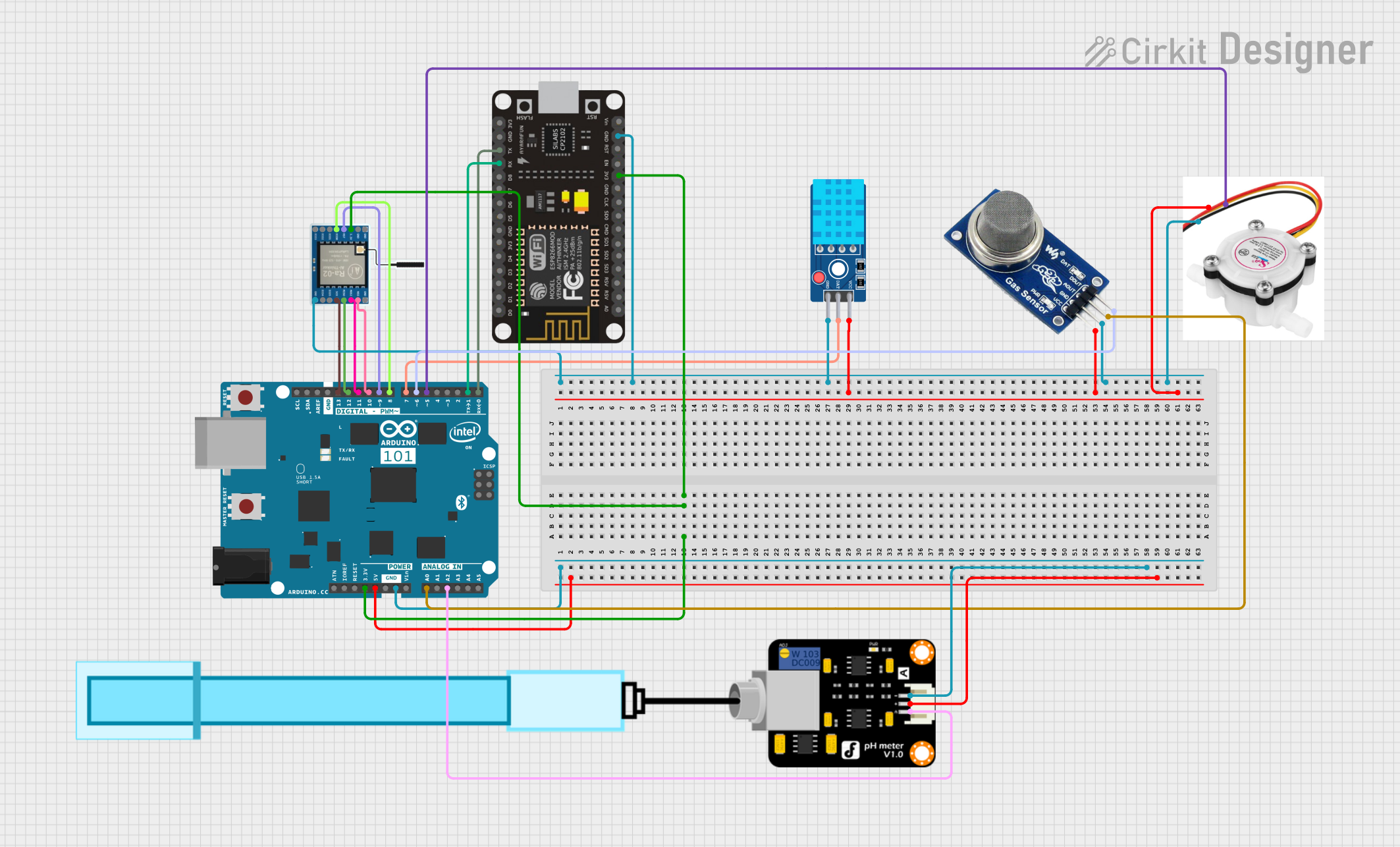
How to Use DHT11 Sensor V2: Examples, Pinouts, and Specs

 Design with DHT11 Sensor V2 in Cirkit Designer
Design with DHT11 Sensor V2 in Cirkit DesignerIntroduction
The DHT11 Sensor V2 is a low-cost, digital temperature and humidity sensor that provides reliable readings for environmental monitoring. It is widely used in various applications such as weather stations, home automation systems, and HVAC control. The sensor is known for its ease of use and is particularly popular among hobbyists and educators for use in small projects.
Explore Projects Built with DHT11 Sensor V2

 Open Project in Cirkit Designer
Open Project in Cirkit Designer
 Open Project in Cirkit Designer
Open Project in Cirkit Designer
 Open Project in Cirkit Designer
Open Project in Cirkit Designer
 Open Project in Cirkit Designer
Open Project in Cirkit DesignerExplore Projects Built with DHT11 Sensor V2

 Open Project in Cirkit Designer
Open Project in Cirkit Designer
 Open Project in Cirkit Designer
Open Project in Cirkit Designer
 Open Project in Cirkit Designer
Open Project in Cirkit Designer
 Open Project in Cirkit Designer
Open Project in Cirkit DesignerTechnical Specifications
Key Technical Details
- Voltage: 3.3 to 5V DC
- Current: 2.5mA max use of current during conversion (while requesting data)
- Humidity: 20-80% with 5% accuracy
- Temperature: 0-50°C with ±2°C accuracy
- Sampling Rate: No more than 1 Hz (once every second)
- Dimensions: 15.5mm x 12mm x 5.5mm
Pin Configuration and Descriptions
| Pin Number | Name | Description |
|---|---|---|
| 1 | VCC | Power supply (3.3 to 5V DC) |
| 2 | DATA | Serial data output |
| 3 | NC | Not connected |
| 4 | GND | Ground |
Usage Instructions
Connecting the DHT11 Sensor to a Circuit
- Connect the VCC pin to a 3.3V or 5V power supply.
- Connect the GND pin to the ground of the power supply.
- Connect the DATA pin to a digital input pin on your microcontroller.
Important Considerations and Best Practices
- Ensure that the power supply is stable and within the specified voltage range.
- Do not exceed the maximum sampling rate of 1Hz to prevent self-heating and inaccurate readings.
- Use a pull-up resistor (typically 4.7kΩ to 10kΩ) between the DATA pin and VCC if the microcontroller does not have built-in pull-up resistors.
- Avoid placing the sensor in direct sunlight or near heat sources to get accurate readings.
- Allow the sensor to acclimate to the environment for accurate readings, especially if there are sudden changes in temperature or humidity.
Example Code for Arduino UNO
#include "DHT.h"
#define DHTPIN 2 // Digital pin connected to the DHT sensor
#define DHTTYPE DHT11 // DHT 11
DHT dht(DHTPIN, DHTTYPE);
void setup() {
Serial.begin(9600);
dht.begin();
}
void loop() {
// Wait a few seconds between measurements.
delay(2000);
// Reading temperature or humidity takes about 250 milliseconds!
float humidity = dht.readHumidity();
// Read temperature as Celsius (the default)
float temperature = dht.readTemperature();
// Check if any reads failed and exit early (to try again).
if (isnan(humidity) || isnan(temperature)) {
Serial.println("Failed to read from DHT sensor!");
return;
}
// Compute heat index in Celsius (isFahrenheit = false)
float heatIndex = dht.computeHeatIndex(temperature, humidity, false);
Serial.print("Humidity: ");
Serial.print(humidity);
Serial.print("% Temperature: ");
Serial.print(temperature);
Serial.print("°C Heat index: ");
Serial.print(heatIndex);
Serial.println("°C");
}
Troubleshooting and FAQs
Common Issues
- Inaccurate Readings: Ensure the sensor is not placed near heat sources and is not exposed to direct sunlight.
- No Data: Check the wiring, ensure the pull-up resistor is in place, and that the power supply is within the specified range.
- Sensor Heating Up: Ensure the sampling rate does not exceed 1Hz.
Solutions and Tips for Troubleshooting
- Wiring Issues: Double-check the connections and ensure that the DATA pin is connected to the correct digital pin on the microcontroller.
- Pull-up Resistor: If the data line is unstable, add a pull-up resistor if not already in place.
- Power Supply: Verify that the power supply is stable and within the 3.3V to 5V range.
FAQs
Q: Can I use the DHT11 sensor outdoors? A: Yes, but it should be protected from direct sunlight and water.
Q: How long does the DHT11 sensor last? A: With proper use, the DHT11 can last for several years.
Q: Can I use multiple DHT11 sensors on the same microcontroller? A: Yes, each sensor will require a separate digital pin for the data signal.
Q: How do I calibrate the DHT11 sensor? A: The DHT11 is factory calibrated and does not typically require additional calibration. If precision is critical, consider using a more accurate sensor.
Q: What is the operating range of the DHT11 sensor? A: The DHT11 operates from 0 to 50°C for temperature and from 20% to 80% for humidity, with specified accuracy ranges.